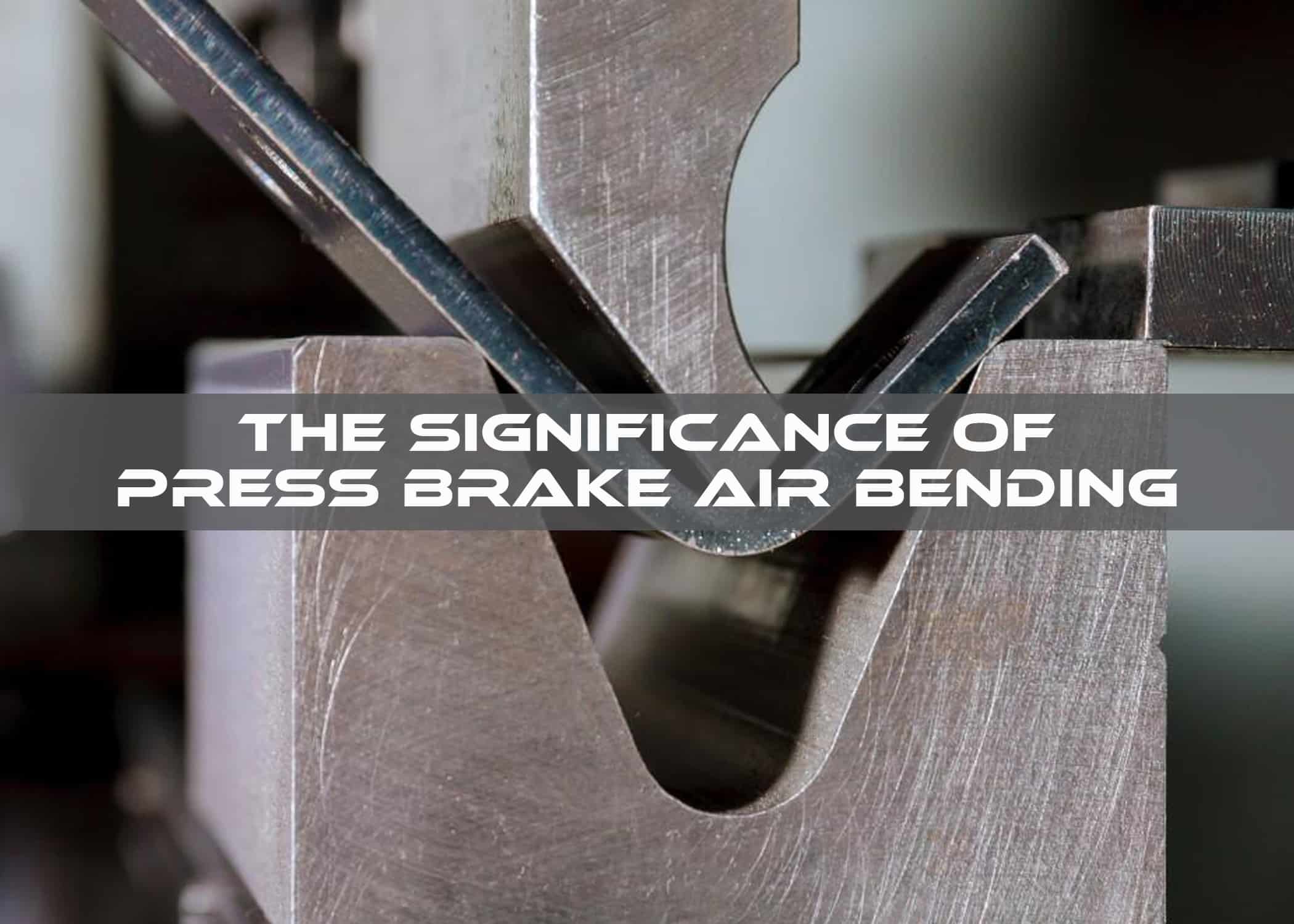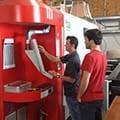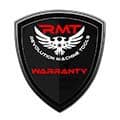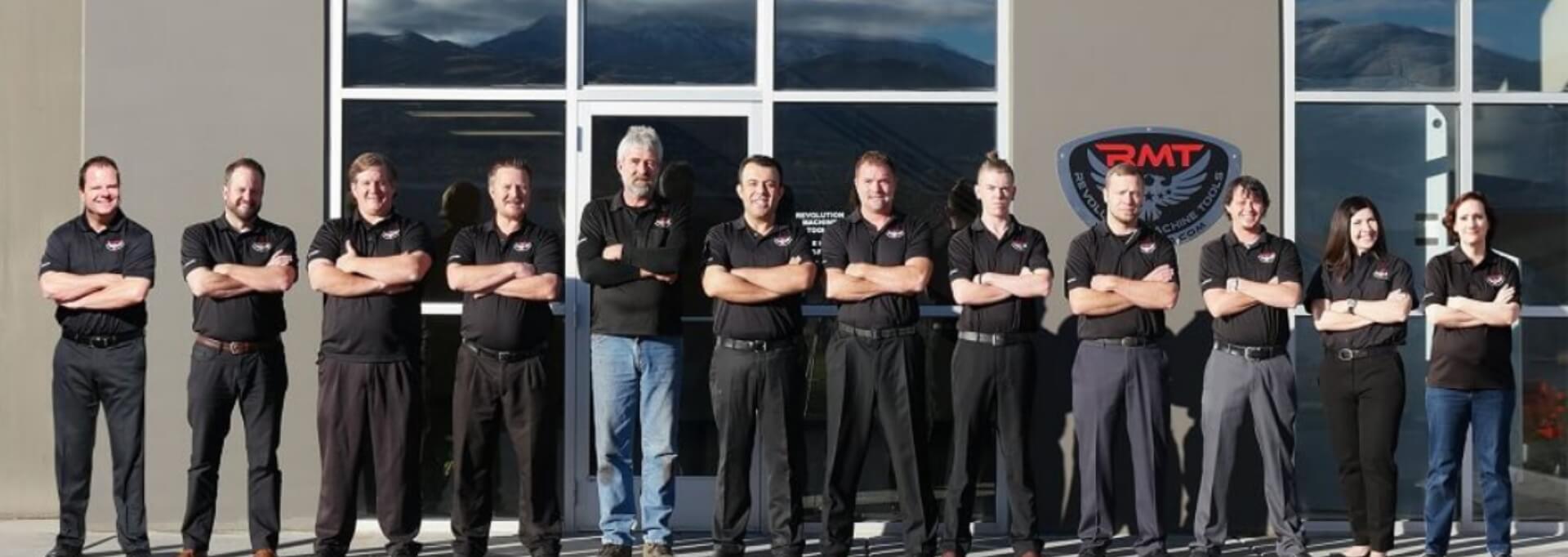What Is Air Bending?
Air bending is a common technique used by press brake operators in sheet and plate metal fabrication. It is a method of bending flat metal into an angle on a press brake using a punch and die to shape the metal through the application of force. Unlike the methods called bottom bending and coining, both of which require the punch and die to come into full contact with the workpiece, air bending relies on the use of controlled gaps between the punch and die.
Each type of bending applies different amounts of pressure to achieve their results:
- Coining, the name of which is borrowed from the metalworking method of making coins, uses extreme tonnage to compress the metal between the punch and die, which changes its very molecular structure and almost eliminates all springback (the tension left in the metal that causes it to spring back towards its original shape once pressure is removed).
- Bottom bending (often simplified as bottoming) brings the punch down to the bottom of the die to form the metal to nearly the exact angle of the tooling, though some springback remains.
- Air bending uses larger dies than the desired bend, with the angle being determined by how far the punch descends into the die. The metal will never touch all points on the punch and die, leaving space (or air) between the metal and most of the tooling. A larger amount of springback occurs in air bending, for which the operator needs to compensate.
The History of Air Bending
The story of air bending is closely tied to the development of press brake technology:
- Early Press Brakes. The concept of folding metal using a press-type bender dates to the late 19th century when manual and mechanical presses were used for bending operations. These early machines were limited in their capabilities and relied on manual adjustments for bending angles.
- Hydraulic Press Brakes. The mid-20th century saw significant advancements in press brake technology with the introduction of hydraulic press brakes. These machines allowed for more precise control over bending operations and the application of consistent force.
- Emergence of Air Bending. Air bending as a fabrication method appeared as a response to the limitations of earlier bending techniques. In air bending, the punch approaches the workpiece with a calculated gap, rather than fully contacting the material. This gap allows for flexibility in bending angles without requiring specific tooling for every angle and material thickness. The operator can adjust the gap between the punch and die to control the bending angle.
- CNC Control. The integration of computer numerical control (CNC) technology into press brakes further improved accuracy and repeatability. CNC press brakes allow for the precise control of the bending process, making air bending even more efficient and versatile.
Advantages of Air Bending
Each method of bending has its pros and cons. Coining can produce precise and sharp bends with minimal springback, but it isn’t very versatile and requires specific tooling for each bending application. Bottom bending is good when tight tolerances are required with only a little springback, but it does need a dedicated set of tooling for each material thickness and bend angle.
Air bending is versatile and cost-effective because it can accommodate a range of material thicknesses and angles with a single set of tooling, since the bending angle is primarily determined by the depth of the punch penetration and the gap between the punch and die. It also does not require as much force as coining and bottom bending, making it a less energy-intensive process.
While operators need to gain a little extra skill to control the angle and compensate for springback with air bending, most small fab shops find the advantages outweigh the drawbacks of using this bending method:
- It is great for shops that need a wide range of bending angles but want to save on tooling costs.
- It is ideal for the operator who wants more control of the bending radius.
- It requires less bending force and causes less wear on the tooling and the machine.
- Since the tooling only contacts the material at three points (the punch tip and two die shoulder radii) it won’t mar the surface of the workpiece as much as other methods.
- It is perfect for an operator who needs to change angles in a single job without necessarily changing the tooling for each setup.
- It saves time in short production runs.
- It works great with a CNC press brake with a control that can automatically adjust for springback.
Air bending is a widely used bending method in sheet metal fabrication due to its flexibility and cost-effectiveness. Modern press brakes are equipped with advanced CNC systems, ensuring accurate and repeatable bending operations. Air bending is favored for its ability to handle various material thicknesses and angles, making it suitable for a wide range of applications in industries such as automotive, aerospace, construction, and manufacturing. While you may want to do some bottom bending in your shop as needed, the bulk of your work should be able to be done very well with air bending, especially if you invest in training your operators properly and equipping your press brakes with precision-ground tooling.
